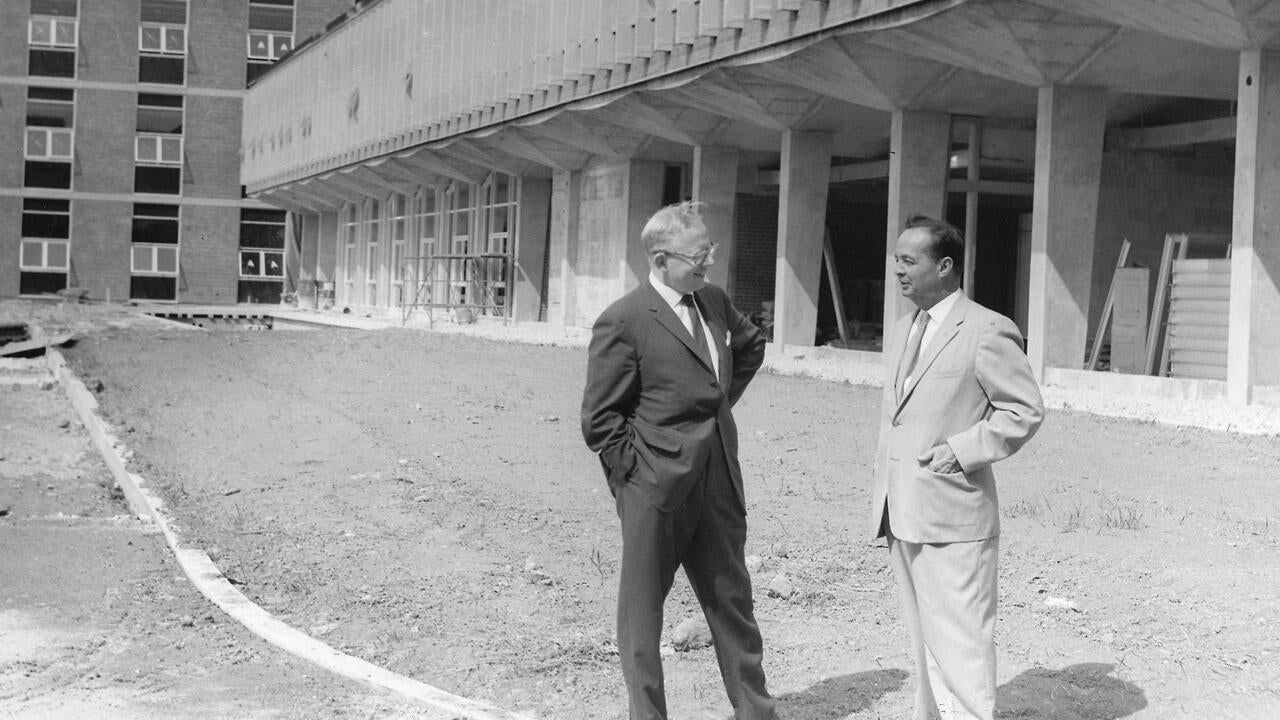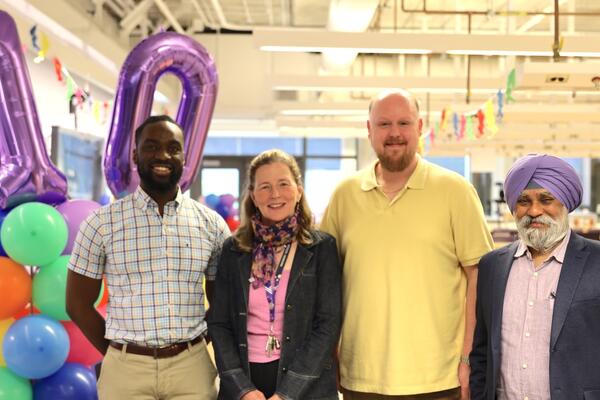
Founding dean reminisces about Waterloo at 60
Douglas Wright joined Waterloo Engineering in 1958 because it was free of the constraints found at other universities at the time

Douglas Wright joined Waterloo Engineering in 1958 because it was free of the constraints found at other universities at the time
By Carol Truemner Faculty of EngineeringIt was the late 1950s when Douglas Wright was approached by recruiters representing several of the newer Canadian universities at the time.
Although some of the offers were tempting, the young civil engineering professor decided to join the fledging University of Waterloo because of the freedom it offered.
“It was free of all the ordinary constraints,” recalls the founding dean of Waterloo Engineering. “I thought engineering could be done in a more modern way and I chose Waterloo because I had absolute freedom to do what I wanted.”
Wright studied civil engineering at the Universities of Toronto, Illinois, and Cambridge where he received his doctorate. After working for a couple of years at Queen’s University, Wright joined Waterloo in 1958, just a year after the University opened its doors. He started as the first chairman of civil engineering, and soon after became the first dean of engineering. At just 31, he was the youngest dean of engineering in the country.
His focus on numerical analysis as a component of the engineering program, along with a continuing interest in engineering research, set Waterloo apart from many other universities. Wright was and remains a vocal proponent of Waterloo Engineering’s renowned co-operative education program on which the Faculty was built.
“The fact that we were doing things in a very different way was why other people thought we’d fail,” he says. “They thought how you did it was more important than what we were trying to achieve.”
During his tenure as dean ending in 1966, Waterloo developed into the largest school of engineering in Canada. Wright later became president and vice-chancellor of the University of Waterloo, a position he held from 1981 to 1993.
Following the lead of their father and grandfather, two of his children and three of his grandchildren also came to Waterloo Engineering, although they were on the other side of the classroom. Son William, daughter Anna and granddaughter Samantha are systems design engineering alumni. Grandson Gregory is a chemical engineering graduate, and granddaughter Abbey is a current systems design engineering student.
This winter, the Wright family sat down together to talk about Waterloo Engineering at 60.
Looking back at the tremendous growth and achievements of Waterloo Engineering over the past 60 years, Douglas Wright says he was always confident the Faculty would do well.
“I knew it would be successful,” he says, adding with a smile, “but I didn’t know it would be quite so successful.”
You can read more about the Wrights and other multi-generational Waterloo Engineering families in July’s issue of WEAL.

Read more
The Waterloo community comes together to remember, reflect and respond to gender-based violence

Read more
Shop Canadian this holiday season with festive porch plants, fashion-forward apparel, craft spirits and more from Waterloo entrepreneurs

Read more
The Pearl Sullivan Engineering IDEAs Clinic marks a decade of delivering experiential learning embedded in the real world and mentored by industry professionals
The University of Waterloo acknowledges that much of our work takes place on the traditional territory of the Neutral, Anishinaabeg, and Haudenosaunee peoples. Our main campus is situated on the Haldimand Tract, the land granted to the Six Nations that includes six miles on each side of the Grand River. Our active work toward reconciliation takes place across our campuses through research, learning, teaching, and community building, and is co-ordinated within the Office of Indigenous Relations.